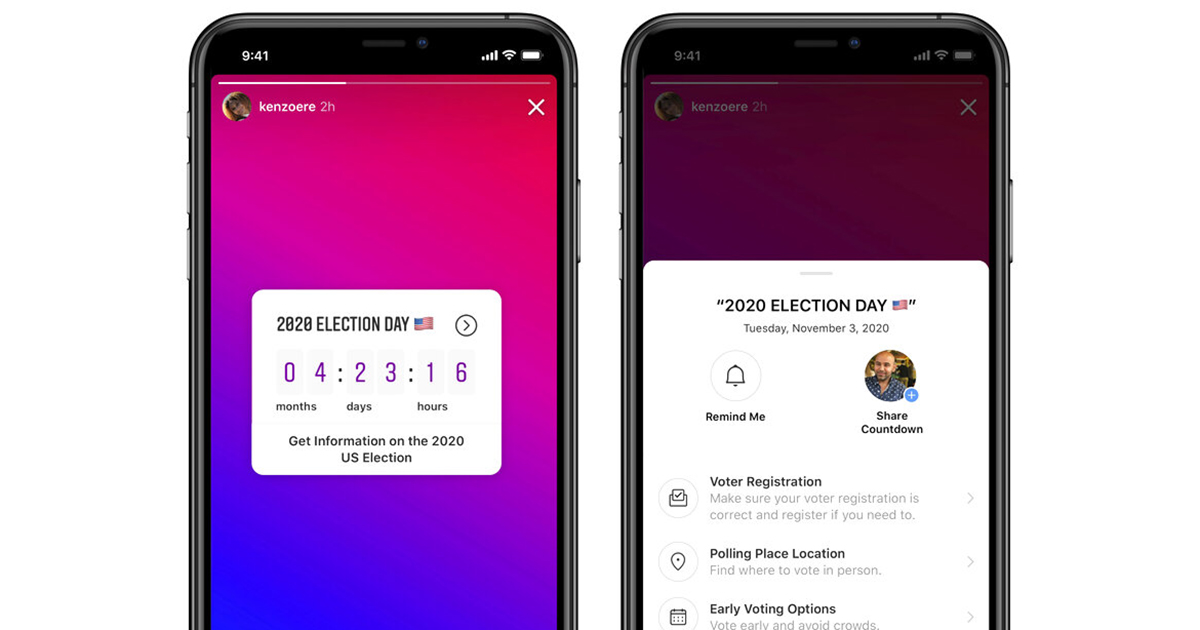SALT LAKE CITY (AP) — The photo that flashed onto the courtroom screen showed a young man dead on his bedroom floor, bare feet poking from the cuffs of his rolled up jeans. Lurking on a trash can at the edge of the picture was what prosecutors said delivered this death: an ordinary, U.S. Postal Service envelope.
It had arrived with 10 round, blue pills inside, the markings of pharmaceutical-grade oxycodone stamped onto the surface. The young man took out two, crushed and snorted them. But the pills were poison, prosecutors said: counterfeits containing fatal grains of fentanyl, a potent synthetic opioid that has written a deadly new chapter in the American opioid epidemic.
The envelope was postmarked from the suburbs of Salt Lake City.
That’s where a clean-cut, 29-year-old college dropout and Eagle Scout named Aaron Shamo made himself a millionaire by building a fentanyl trafficking empire with not much more than his computer and the help of a few friends.
___
This story was produced in partnership with the Pulitzer Center on Crisis Reporting.
___
For three weeks this summer, those suburban millennials climbed onto the witness stand at his federal trial and offered an unprecedented window into how fentanyl bought and sold online has transformed the global drug trade. There was no testimony of underground tunnels or gangland murders or anything that a wall at the southern border might stop. Shamo called himself a “white-collar drug dealer,” drew in co-workers from his time at eBay and peppered his messages to them with smiley-face emojis. His attorney called him a fool; his primary defense was that he isn’t smart enough to be a kingpin.
How he and his friends managed to flood the country with a half-million fake oxycodone pills reveals the ease with which fentanyl now moves around the world, threatening to expand the epidemic beyond America’s borders. It is so potent, so easy to transport, experts say, large-scale traffickers no longer require sophisticated networks to send it to any corner of the globe. All they need is a mailbox, internet access and people with an appetite for opioids. And consumption rates are rising from Asia to Europe to Latin America as pharmaceutical companies promote painkillers abroad.
The case against Shamo detailed how white powder up to 100 times stronger than morphine was bought online from a laboratory in China and arrived in Utah via international mail; it was shaped into perfect-looking replicas of oxycodone tablets in the press that thumped in Shamo’s basement and resold on the internet’s black markets. Then it was routed back into the postal system in thousands of packages addressed to homes across this country awash with prescription painkiller addiction.
When Shamo took the stand to try to spare himself a lifetime in prison, he began with a nervous chuckle. He careened from one topic to the next in a monologue prosecutors would later describe as masterful manipulation to convince the jury he thought his drug-dealing was helping people. Customers wrote thank you notes because their doctors refused to prescribe more painkillers, he said. It felt like “a win-win situation” — he got rich and his customers got drugs.
One of them was a struggling 21-year-old named Ruslan Klyuev who died in his bedroom in Daly City, California, the envelope from Utah at his feet. Shamo was charged in connection to that overdose alone, but when investigators scoured the list of customers they said they counted dozens more dead.
___
The question before this jury is being debated all across America: Two decades into the opioid epidemic, is there such a thing as justice for 400,000 lost lives?
The largest civil litigation in history is testing how the pharmaceutical industry should be held accountable for inundating the country with billions of addictive pain pills. Purdue Pharma, seen by many as the primary villain for deceptively pushing the blockbuster drug OxyContin, reached a tentative $12 billion settlement this week with about half the states and roughly 2,000 local governments. Attorneys general who didn’t sign on say the figure is far too low. A trial of other pharmaceutical companies is scheduled for next month, in which communities will contend that their mass marketing of prescription painkillers sparked an epidemic.
This crisis began in the 1990s and has since spiraled into waves, each worse than the one before: Prescription opioids spread addiction, then a crackdown on prescribing paved the road to heroin, which led to fentanyl — a synthetic opioid made entirely in a laboratory. Traffickers added it to heroin to boost its potency and profitability. That transition happened slowly at first, then with extraordinary ferocity.
By 2017, deaths from synthetic opioids had increased more than 800 percent, to 28,466, dragging the United States’ overall life expectancy down for a third consecutive year for the first time in a century. Fentanyl deaths have been reported abroad, in Canada, Sweden, Estonia, the United Kingdom. Countries with surging prescription opioid addiction, like Australia, fear they are on the brink.
“Fentanyl will be the bubonic plague,” said Mike Vigil, former chief of international operations for the Drug Enforcement Administration, warning that any country with a burgeoning prescription opioid problem could soon find itself following American footsteps. “It’s just a matter of time.”
No one can say exactly how or why fentanyl, first synthesized in 1959 as a powerful painkiller, entered the modern illicit drug market, said Bryce Pardo, a researcher at the Rand Corporation. In 2013, people began overdosing on heroin laced with fentanyl in New England and Ohio, and it spread from there. Shabbir Safdar, the Partnership for Safe Medicines’ executive director, said the first known death from a fentanyl-laced pill was in San Francisco in October 2015.
It was a frightening development: The DEA estimates 3.4 million Americans misuse prescription painkillers, compared to 475,000 heroin users — meaning the pool potentially exposed is 10 times bigger.
There are two sources of supply. Mexican cartels and packages shipped direct from China, where it is produced in a huge and under-regulated chemical sector. A Senate investigation last year found massive quantities of fentanyl pouring in from China through the Postal Service. The report largely blamed dated technology that left customs inspectors sifting through packages manually looking for “the proverbial needle in a haystack.” The Postal Service wrote in a statement to The Associated Press that it is working hard with its international counterparts to close those loopholes, and is improving its technology to intercept fentanyl shipments.
By the time a seized package heading from China to Utah led investigators to Shamo, he had already turned fentanyl into at least 458,946 potentially poisonous pills, the government said. There are many more like him, officials say, upstart traffickers pressing pure Chinese-made fentanyl into pills in their basements and kitchens with unsophisticated equipment. In a single batch, one pill might have no fentanyl and another enough to kill a person instantly. One agent at Shamo’s trial compared it to making chocolate-chip cookies, only if too many chips ended up in a “cookie,” whoever ate it dropped dead.
For traffickers, the profit margins are irresistible: The DEA estimates a kilogram of fentanyl synthesized for a few thousand dollars could make a dealer more than $1 million.
“Any moron can basically become a major drug kingpin by dealing in fentanyl,” said Vigil. “You can have somebody with an IQ minus 100 who becomes an overnight multimillionaire.”
___
Aaron Shamo dreamed of entrepreneurial riches. He idolized Steve Jobs and Bill Gates, and studied self-improvement books like “Think and Grow Rich.”
He and a longtime friend, Drew Crandall, worked at eBay after failed stints in college. But Crandall was fired and Shamo decided it was “unfair” that he still had to work, so he quit. They wanted easy money.
Shamo grew up in Phoenix with three older sisters. As a teenager, he started smoking pot and refusing to attend services with The Church of Jesus Christ of Latter-day Saints. His parents sent him to boarding school in Utah, where he earned his Eagle Scout badge. He later met Crandall through their shared love of longboarding and they moved in together. Crandall was awkward and shy; Shamo was charismatic, and prided himself on helping his friend talk to girls.
The pair concocted a plan to sell their Adderall, prescribed for attention deficit disorder, on the dark web — a wild, unregulated layer of the internet reached through a special browser. There are underground marketplaces there that mimic Amazon or eBay, where guns and drugs and pirated software are traded. Money is exchanged anonymously through cryptocurrencies like bitcoin.
They learned what they needed on the web, searching with queries like “how to ship drugs.” It was so easy. They expanded, ordering drugs in bulk, breaking them down and selling at a mark-up, all while barely having to leave the house.
They used the postal system like a drug mule, peddling the club drug MDMA, magic mushrooms, date rape drugs — they once bought a kilogram of cocaine from Peru. They recruited friends, offering them $100 to have parcels mailed to their homes, no questions asked.
But the profit margins were slim and their ambitions were greater: They bought a pill press, ordered the sedative alprazolam online from India and watched YouTube videos to figure out how to turn it into fake Xanax, an anti-anxiety medication. Crandall, math minded, created the recipe. They mixed it up by shaking it in mason jars.
Then Crandall fell in love.
His new girlfriend grew suspicious when he would sneak away to package drugs. When she confronted him at a party, he tearfully confessed. She forgave him, if he promised to leave the business. They bought one-way tickets to New Zealand.
Then a local drug dealer made a suggestion to Shamo that would change the course of his life: There was a fortune to be made in producing fake oxycodone.
Shamo enlisted his gym buddy, Jonathan Luke Paz, to help him. Shamo ordered fentanyl online from China, set up the pill press in the basement and bought dyes and stamps to match popular pharmaceuticals. Then they handed them over to the local dealer, who tested them on his own customers. The first batches were weak or speckled in color, he told them, or didn’t react like real oxycodone when users heated it on tinfoil to smoke it.
But they were getting better.
“Close to being money in the bank,” the dealer messaged Shamo. “You did it, bro.”
On the first day of 2016, Shamo wrote out his goals for the upcoming year: He would be rich. All the girls would want him.
“I will overachieve,” he wrote. “I will overcome.”
He went online with his products a month later. Some were specified as fentanyl, but some weren’t, purporting instead to contain 30 milligrams of oxycodone. Shamo named this new store Pharma-Master.
___
As winter turned to summer, sales skyrocketed. Pharma-Master started selling thousands of pills a week, charging around $10 each.
On June 6, a relatively small order came in: 10 pills, to be shipped to an apartment house in Daly City, a working-class suburb of San Francisco.
Like every order, it was sent in an encrypted email to two former eBay co-workers in charge of distribution. Alexandrya Tonge and Katherine Bustin counted out the pills in their suburban condo, packaged the shipments and dropped them in the mail.
The envelope arrived at the doorstep at 3 p.m. on June 11.
Under different circumstances, Shamo might have been friends with the 21-year-old man who lived there. Ruslan Klyuev, a Russian immigrant, was also an aspiring tech entrepreneur interested in the dark web. He had a baby face: rosy cheeks and curly hair. Klyuev loved to cook and would make extravagant meals for the house.
But his relationship ended, his web design business sputtered and he became estranged from his family, said Barry, a roommate who spoke on the condition that his last name not be published. His emotions toggled between sorrow and elation, and he struggled with substance abuse.
After drinking vodka, Klyuev crushed two of the pills with a battery and snorted the powder with a rolled-up sticky note, according to testimony. He started drifting in and out of sleep. He couldn’t stand up.
He was found dead the next day, with fentanyl, alcohol and a substance associated with cocaine in his system.
His was the only death with which Shamo would be charged. His defense attorney, Greg Skordas, argued that neither his death nor any others can be definitely linked with Shamo’s operation.
But in documents, prosecutors connected Shamo to a veritable slaughter:
A 24-year-old man in Seattle overdosed three weeks after he bought pills from Pharma-Master in March 2016.
Later that spring, 40 pills were shipped to a 21-year-old in Washington, D.C. He died in his dorm room 11 days later.
In Utah, a 29-year-old software analyst named Devin Meldrum had been searching since he was a teenager for a cure for cluster headaches that felt like knives stabbing his skull, said his father, Rod.
Doctors had prescribed opioids but limited the dosage, so he bought a backup supply from Pharma-Master. On Aug. 13, 2016, he ran out of pills days before his refill. As he got ready for bed, he texted his fiance and took a pill from his reserve for the first time, his father said.
He was dead before she arrived to say goodnight, blue on his bathroom floor.
His father isn’t sure Shamo even now understands the magnitude of what happened: “Does he even comprehend how many families have had their hearts torn out?”
___
Online, Pharma-Master was getting rave reviews.
“These will make u a millionaire in under a year, guarantee,” wrote one shopper who called himself “Trustworthy Money.”
He was a dealer in Portland named Jared Gillespie. He bought 80,000 pills from Pharma-Master, according to documents filed against Gillespie in Oregon. He knew he was buying fentanyl pills, the Oregon prosecutors alleged, but the people buying from him had no way to know that. They are unknown and uncounted.
Shamo offered steep discounts for bulk buyers. Tonge, one of his distributors, testified that she began to question Shamo’s claim that he was helping patients who couldn’t get medication: Why would one person need 5,000 pills?
Her vacuum cleaner would become a critical piece of evidence. Its dust bin was filled with pills. The operation had grown so frantic, pumping out tens of thousands of tablets a month, that when they spilled onto the floor, they weren’t worth saving.
Tonge and her partner complained that the orders were coming too quickly, so Shamo hired a “runner” named Sean Gygi to pick up the packages and drop them in the mail, dozens of them a day.
Drug manufacturing became routine: Shamo once wrote himself a to-do list, and included a reminder to “make blues,” the street name for oxycodone, along with getting a haircut, washing his sheets, cleaning the kitchen. And Shamo planned to expand. He bought another press so big agents would later need a tow truck to drag it out of his garage.
The money was pouring in, and out.
Shamo hired a personal assistant; she did his shopping, had his car detailed. He stuffed a duffel bag with $429,000 cash and asked his parents to hold it. He bragged to friends about VIP bottle service at clubs and gambling in Las Vegas. He shopped for real estate in Puerto Rico; took photos sipping champagne on a cruise ship; bought designer jeans, an 88-inch television, a boat and a BMW.
Crandall and his girlfriend posted photos on Instagram of trips to Laos, Thailand, Singapore, kayaking and partying. But he was running out of money and agreed to become a remote customer service representative. The list of people accepting packages from China ballooned to more than a dozen. Everyone was making easy money and getting text messages from Shamo dotted with “lol” and “awesome!”
Shamo penned another note: “I am Shamo. I am awesome. My friends love me. I created an empire.”
But even as he cheered himself on, there were signs of danger.
One customer reported an overdose death. Shamo scanned obituaries, then declared it was a fake, Crandall said. Then a message said pills were making people sick.
Crandall forwarded it to Shamo with a dismissive question: Should he tell them to “suck it up?” Or send more pills to pacify them?
___
They didn’t know it, but a suspicious customs agent at the Los Angeles International Airport had flagged a box from Shanghai, China, pulled it off the belt and looked inside. The agent found 98.7 grams of fentanyl powder — enough to make almost 100,000 pills. The box was destined for Utah.
Agents looked for more packages making their way from China to Utah, and eventually one arrived, said an agent with Homeland Security Investigations who spoke on condition of anonymity to protect ongoing investigations. On Nov. 8, 2016, postal inspectors seized a box en route from a port city in China known to law enforcement as a fentanyl-trafficking hub. It was addressed to Gygi, Shamo’s “runner,” so agents arrived at his house with a search warrant.
Gygi said he thought the hundreds of envelopes he’d put in the mail contained the party drugs he sometimes took himself. Told it was fentanyl, the agent recalled, Gygi drooped.
He agreed to wear a wire while he picked up the packages, like he did every day. But instead of dropping them in the mail, he delivered them to police.
This single day’s shipment contained 34,828 fentanyl pills destined for homes in 26 states.
Four days later, on Nov. 22, 2016, agents stood on Shamo’s stoop, shouted through a bullhorn, then broke the door down with a battering ram. They were dressed in neon-orange hazmat suits with clear bowls around their faces that made them look like astronauts.
Shamo came up the stairs in a T-shirt and shorts, a mask and gloves in his pocket. A pill press downstairs was running, in a room with powder caked on the walls and the furniture.
Others were raiding the stash at Bustin and Tonge’s condo. Veteran vice officers would say they had never seen so many pills, even in international operations. In total, they packed up over 74,000 fentanyl pills awaiting distribution.
In Shamo’s sock drawer, agents found stack after stack of cash. There was more money in a safe in the closet. Agents totaled up more than $1.2 million, not including the money he had tied up in Bitcoin or bags he’d stashed with his family. Investigators eventually caught up with Paz, whom Shamo paid around a dollar per pill, and he surrendered $800,000 more.
Crandall was in Laos, still traveling with his girlfriend, when he heard the news. He stored his drug-related data on a flash drive, threw it down a storm drain and sent an email to the dark web marketplace: “This account has been compromised.” After a few months, he figured he was in the clear. He and his girlfriend planned their wedding and invited guests to meet them in Hawaii for the big day: May 12, 2017. They bought rings, and a dress.
Agents were waiting when they stepped onto American soil in Honolulu.
___
When Crandall sat on the witness stand, he was slump-shouldered and shackled, clumsily trying to maneuver his handcuffs to pull a tissue out of the box to wipe his eyes. In the two years since his arrest, he has been imprisoned in a county jail and watched his fellow inmates suffer the brutal fallout of an opioid epidemic. They stole from their parents, cycled in and out of jail and shivered, sweated, sobbed through withdrawal.
He’d helped feed this, he realized. For money.
He and Shamo’s other ex-partners and packagers pleaded guilty, agreed to testify against their friend and hoped for mercy.
The story they told convinced the jury to convict Shamo of 12 counts, including continuing criminal enterprise, the so-called “kingpin charge” that is typically reserved for drug lords like El Chapo and carries a mandatory life sentence. The jury deadlocked, though, on the 13th count: the death of Klyuev.
The bust was one of the largest operations in the country in 2016. But the fentanyl trade has only grown more sophisticated since. By comparison, Shamo now looks “small-time,” said Safdar, with the Partnership for Safe Medicines. The most notorious Mexican drug cartels have transitioned to fentanyl, even as homegrown upstarts like Shamo’s proliferate.
Seizure data in the United Nations World Drug Report shows trafficking quickly expanding worldwide. In 2013, four countries reported fentanyl seizures. By 2016: 12 countries. In 2017, 16 countries reported seizing fentanyl.
There is no reason to believe it will not spread further. In Africa and the Middle East, the synthetic opioid tramadol is widely abused, much of it illicitly manufactured in Asia. If that market transitions to fentanyl it would be catastrophic, said Scott Stewart, a former agent with the State Department. In Australia, prescription opioid consumption has quadrupled. Marianne Jauncey, medical director of a Sydney harm-reduction center, can’t think of any reason fentanyl won’t soon arrive — all they can do is prepare for the day that it does.
As Shamo was convicted, a single dark web marketplace still had 32,000 listings for drugs, thousands of them claiming to be oxycodone. There was no way to tell whether they originated in a pharmacy or somebody’s basement.
One vendor even borrowed a version of Shamo’s name. Pharmamaster peddles oxys online, sold in bulk at a discount. It has, it boasts, an “unlimited” supply.
“Pharma-grade A++,” the listings promise. “24-hour shipping!”










